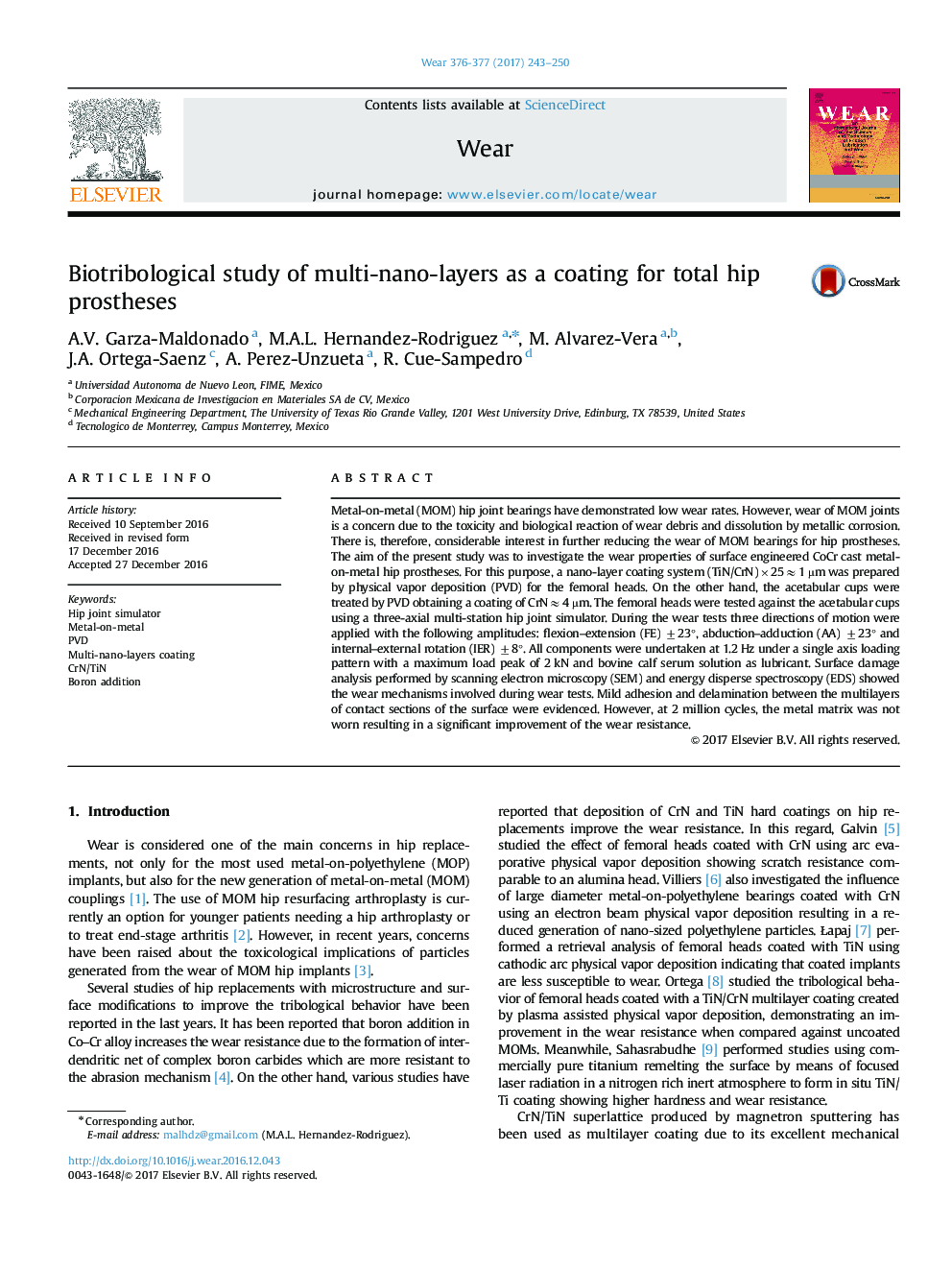| Article ID | Journal | Published Year | Pages | File Type |
|---|---|---|---|---|
| 4986690 | Wear | 2017 | 8 Pages |
Abstract
Metal-on-metal (MOM) hip joint bearings have demonstrated low wear rates. However, wear of MOM joints is a concern due to the toxicity and biological reaction of wear debris and dissolution by metallic corrosion. There is, therefore, considerable interest in further reducing the wear of MOM bearings for hip prostheses. The aim of the present study was to investigate the wear properties of surface engineered CoCr cast metal-on-metal hip prostheses. For this purpose, a nano-layer coating system (TiN/CrN)Ã25â1 µm was prepared by physical vapor deposition (PVD) for the femoral heads. On the other hand, the acetabular cups were treated by PVD obtaining a coating of CrNâ4 µm. The femoral heads were tested against the acetabular cups using a three-axial multi-station hip joint simulator. During the wear tests three directions of motion were applied with the following amplitudes: flexion-extension (FE) ±23°, abduction-adduction (AA) ±23° and internal-external rotation (IER) ±8°. All components were undertaken at 1.2 Hz under a single axis loading pattern with a maximum load peak of 2 kN and bovine calf serum solution as lubricant. Surface damage analysis performed by scanning electron microscopy (SEM) and energy disperse spectroscopy (EDS) showed the wear mechanisms involved during wear tests. Mild adhesion and delamination between the multilayers of contact sections of the surface were evidenced. However, at 2 million cycles, the metal matrix was not worn resulting in a significant improvement of the wear resistance.
Related Topics
Physical Sciences and Engineering
Chemical Engineering
Colloid and Surface Chemistry
Authors
A.V. Garza-Maldonado, M.A.L. Hernandez-Rodriguez, M. Alvarez-Vera, J.A. Ortega-Saenz, A. Perez-Unzueta, R. Cue-Sampedro,
